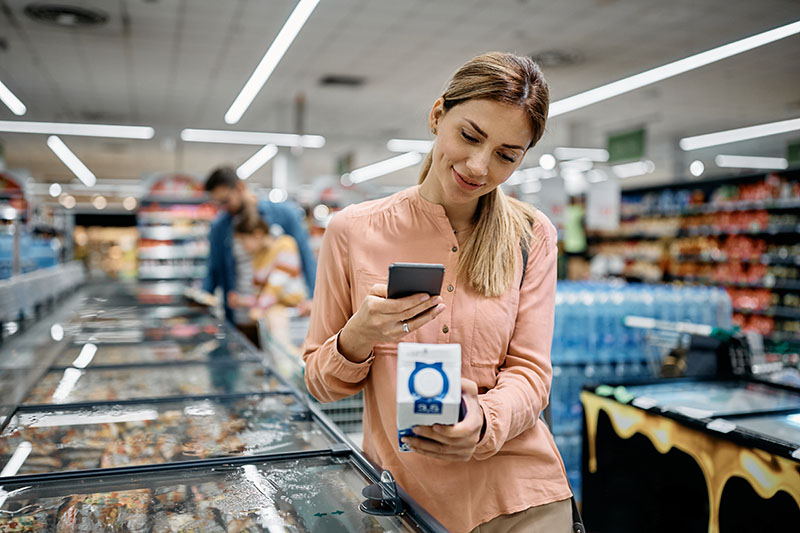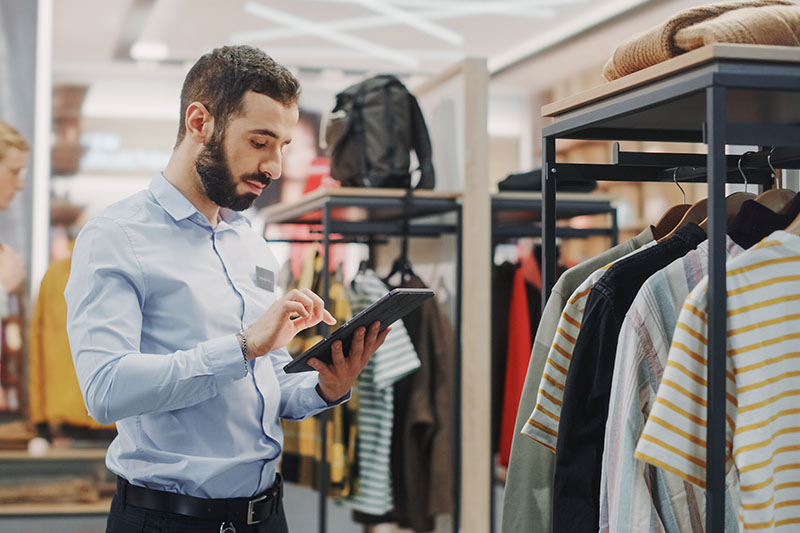Retail moves from clicks to bricks
In recent years, the dominance of e-commerce seemed unshakable, but a remarkable shift is now underway as numerous retail brands are embracing physical retail spaces.
This trend emerged as early as 2013 in the US when brands like Warby Parker and Allbirds successfully opened brick-and-mortar stores in New York and San Francisco. Since then, renowned online retailers such as Amazon, Peloton, Everlane, Glossier and Fabletics have followed suit, recognising the value of a physical presence.
In this week’s blog, we’re exploring the new omnichannel approach of various e-commerce brands, and what this evolution means for the future of retail.

Amazon
Amazon, despite operating only 48 stores worldwide, has made a significant impact with its brick-and-mortar strategy. Expanding into the grocery business has been a particular priority for the company – evident from their monumental acquisition of Whole Foods for $13.7 billion.
The brand have since utilised their digital expertise to create a state-of-the-art customer experiences in physical stores. With a wide range of products and a seamless checkout process through video monitoring and automatic debit from customers’ Amazon accounts – the retail giant offers an unsurpassed level of convenience.
Gymshark
In the UK, Gymshark, a leading athleisure brand, opened its first global store on London’s Regent Street to profound success. The store provides a safe and inclusive environment for customers to try on gym wear, with mannequins representing diverse sizes, shapes, genders, and abilities.
Additionally, the space serves as a community hub where individuals can exercise and engage in meaningful experiences together. The positive response to this store has convinced Gymshark’s founder and CEO, Ben Francis, that the brand’s long-term future lies in physical retail.
Bonobos
Bonobos – a menswear retailer that launched exclusively online in 2007 – is another company that has in more recent times been finding success through its extensions into bricks and mortar.
As a retailer that targets primarily male millennials – a demographic that often finds the retail experience a hassle – the ecommerce route made the most sense. However, where Bonobos has really excelled ahead of the curve is with its introduction of brick-and-mortar “Guideshops”.
These brick-and-mortar locations invite customers to schedule personalised appointments, where representatives, playfully called “Ninjas,” guide them through a curated shopping experience, complete with fitting procedures and even a refreshing beer.

From clicks to bricks
Physical stores, especially flagship locations in prominent areas like Oxford Street and Fifth Avenue, serve as aspirational destinations where customers can forge tangible connections with brands. In-store staff offer personalised service, resulting in higher conversion rates and increased transaction volumes. The credibility gained from a physical presence empowers customers to try products before making a purchase.
Practically speaking, brick-and-mortar stores help e-commerce brands reduce the costs of deliveries and returns. Opening stores in major cities allows for cost-effective last-mile logistics, while providing customers with the convenience of in-store returns.
Embracing omnichannel
As more online brands recognize the value of physical stores, this shift is expected to continue. While a strong online presence remains crucial, a quality omnichannel approach that integrates both online and physical retail is becoming the gold standard. The evolving retail landscape presents digitally native brands with unprecedented opportunities to secure prime retail space.
Cordis have a constant finger on the pulse of the advertising industry – fusing decades of experience, with tomorrow’s technology; we retain a relevance that gives us a winning edge over competitors!
If you’re interested in reinvigorating your company for 2023; get in touch with Cordis today!